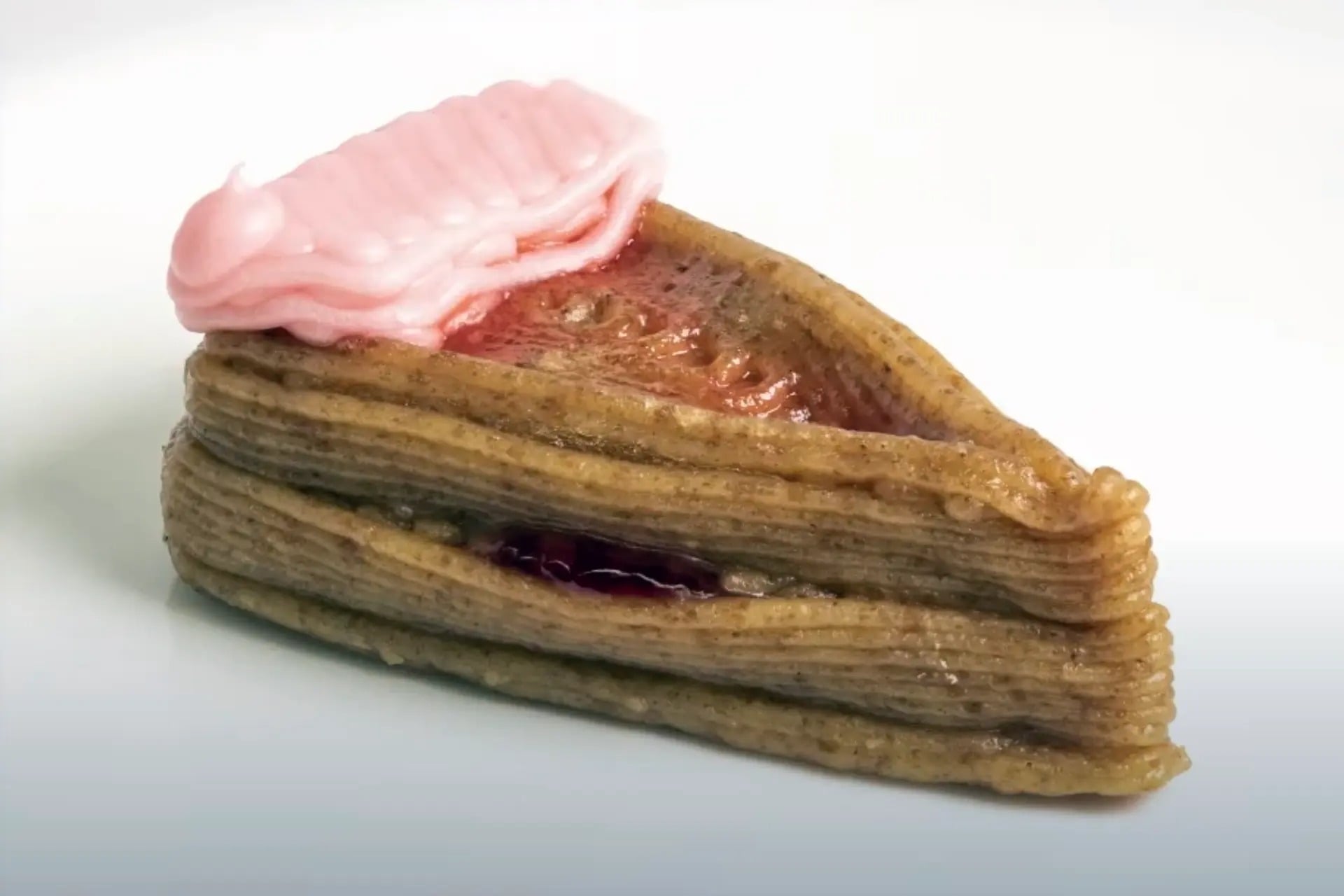
Over the years, scientists have used 3D printers for various products. They include electronic devices, jewelry and even artificial organs. Now, mechanical engineers from New York's Columbia University have unveiled a 3D-printed cheesecake made with seven ingredients. This is the most number of items ever used to print a single food product.
It is also the first time the food was assembled and cooked entirely by a 3D-printing machine. In the past, 3D-printed food has required an additional step, such as baking or frying, before it is ready for consumption.
Jonathan Blutinger and his team began by getting the seven ingredients ready for the print process. The Nutella, peanut butter, and strawberry jam needed no preparation. They were soft enough to pass through the syringe printhead. The bananas were also easy since they just had to be mashed. The graham crackers needed a little more work. They had to be crushed and mixed with water and butter to form a thick paste.

Once ready, the ingredients were placed into the 3D printer and printed out in layers to create a slice of cheesecake. The biggest challenge was keeping the dessert's shape. The scientists solved the issue by using the sturdier ingredients to support the softer ones. It took eight attempts to get the proportions right.
The final product featured a layer of graham cracker paste throughout the piece. Alternate layers of peanut butter and Nutella followed. Each section was topped with banana puree or strawberry jam. The final step was to use new laser technology to bake the graham cracker layer. It took a total of 30 minutes to make the slice.
"When you bite into it, you kind of feel the flavors hit you in different waves," Blutinger told New Scientist. "And I think that's a function of the layering inside of the actual structure."
The researchers unveiled their creation in the journal NPJ Science of Food on March 21, 2023. They believe 3D printing can be used to make unique and healthy foods. The technology can particularly benefit the plant-based meat market. Here, texture and taste must be carefully developed to resemble real meat. It can also help create customized meals for those with special dietary needs.
Resources: NewAtlas.com, CNN.com, CBSnews.com,.NewScientist.com
